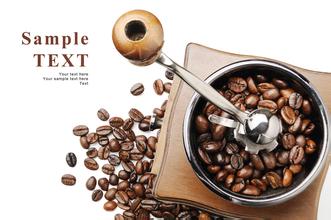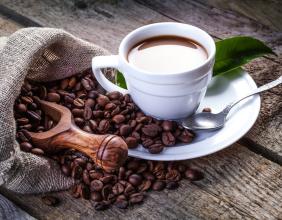Liberian coffee beans-types of Italian coffee
Liberian coffee beans-types of Italian coffee
Coffea liberica does not want to go into great detail here, because his trading scope is very small, usually not used, what we are talking about is not very often, so let's briefly describe it here. The origin of Liberian coffee is in West Africa, and it has strong adaptability to all kinds of environments, such as high and low temperature, damp or dry, except that it is not resistant to leaf rust, and Arabica species are not resistant to leaf rust. However, the flavor of Liberian species is worse than that of Arabica species, and the bitterness is extremely severe, so it is only traded on the domestic market in some West African countries, or planted for research. Bean-shaped spoon-shaped, large, tree height of 10m, cultivated at a height of less than 200m, strong rot resistance. The coffea robusta Linden was originally a mutant of the coffea canephora, but it is customary to compare the robusta with the Arabica rather than the Congolese. Robusta bean type is relatively round, sour is not obvious, but has a unique bitter taste, the flavor is similar to fried wheat, is known as "Luobu flavor". The flavor is very strong, mainly used in instant coffee, bottled coffee, liquid coffee and other industrial production of coffee. But the caffeine content of Robusta is about 3.2%, which is much higher than 1.5% of Arabica. The height of the tree is about 5m, the cultivation height is less than 500m, it has strong rot resistance, high temperature and rain tolerance, and has stronger resistance to leaf rust than Arabica. The main producers of Robusta species are Indonesia, Vietnam and West African countries with C ô te d'Ivoire, Algeria and Angola as the center. In recent years, Vietnam is more committed to becoming one of the major coffee producers and including coffee production in its national policy. Hey, this is one of the answers to Mr. Eric's question about why Vietnamese coffee can be sold for 0.5 yuan a cup. First, quality; second, culture; third, quantity. However, Vietnam also produces some Arabica coffee (coffea arabica) with flat beans, slender grains, similar oval shape, high-quality aroma and sour taste, tree height 5m m 6m, cultivation height in 500-2000m low altitude area, not resistant to low temperature and high temperature, rainy and rainy, weak resistance to leaf rust, and long fruiting period. within about 3 years, the country of origin is Ethiopia. Among the three native species, Arabica is of the best quality.
There are about 40 species of coffee, but the only ones that can produce coffee beans with commercial value are Arabica, Robusta and Liberian. these three species are called the "three native species of coffee". But most of the coffee in circulation on the market are Arabica and Robusta.
According to the statistics of ICO (international coffea organizations International Coffee Organization), excluding the domestic transactions of coffee producing countries, about 65% of the coffee in circulation in the world market is Arabica and 35% is Robusta.

Important Notice :
前街咖啡 FrontStreet Coffee has moved to new addredd:
FrontStreet Coffee Address: 315,Donghua East Road,GuangZhou
Tel:020 38364473
- Prev

How to choose an Italian Coffee Machine-how to adjust the scale of an Italian Bean Mill
Italian coffee machine how to choose bean grinder-Italian bean grinder how to adjust the flat knife is the largest quantity on the market. Whether it is a single bean grinder or an Italian bean grinder. Whether it is the top commercial German Mehdi EK43 or the mid-range MAZZER MAJOR, or the Eureka MMG designed for home use. Flat knife bean grinder generally has a clear positioning, either Italian brand MA
- Next

Italian Coffee Grinding thickness scale Flavor description Taste treatment Variety Manor introduction
Italian Coffee Grinding thickness scale Flavor description Variety Manor introduction when coffee beans enter the grinder, the blades in the grinder will crush the coffee beans into powder. The smaller the distance between the blade and the blade, the smaller the coffee beans will be ground into smaller particles. The finer the grinding particles are, the tighter they are, and the more difficult it is for the water to pass through, thus greatly prolonging the extraction time.
Related
- Beginners will see the "Coffee pull flower" guide!
- What is the difference between ice blog purified milk and ordinary milk coffee?
- Why is the Philippines the largest producer of crops in Liberia?
- For coffee extraction, should the fine powder be retained?
- How does extracted espresso fill pressed powder? How much strength does it take to press the powder?
- How to make jasmine cold extract coffee? Is the jasmine + latte good?
- Will this little toy really make the coffee taste better? How does Lily Drip affect coffee extraction?
- Will the action of slapping the filter cup also affect coffee extraction?
- What's the difference between powder-to-water ratio and powder-to-liquid ratio?
- What is the Ethiopian local species? What does it have to do with Heirloom native species?

